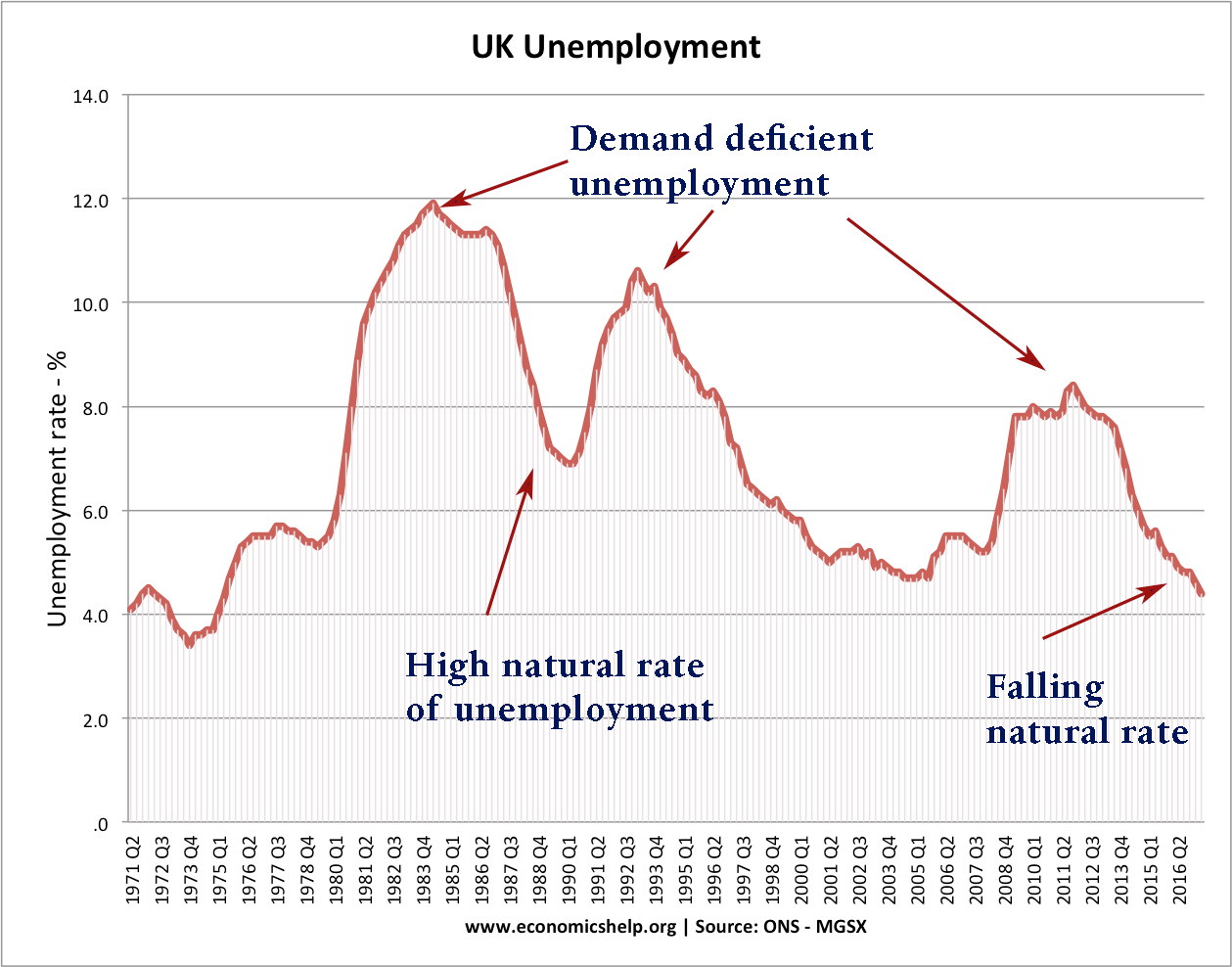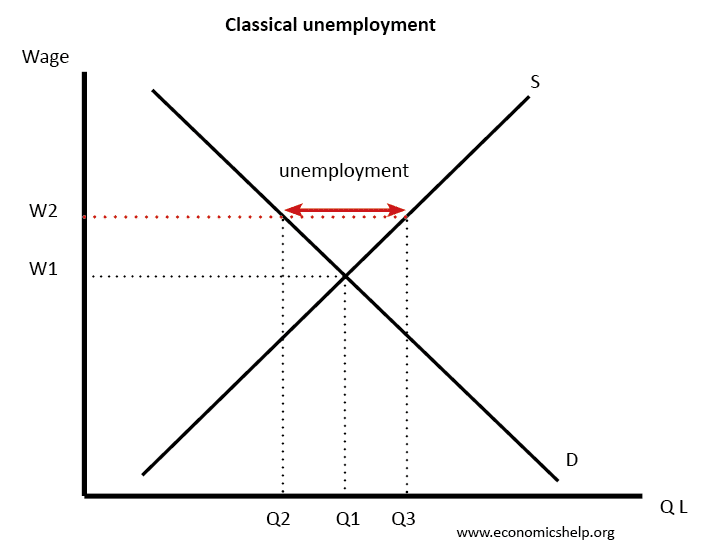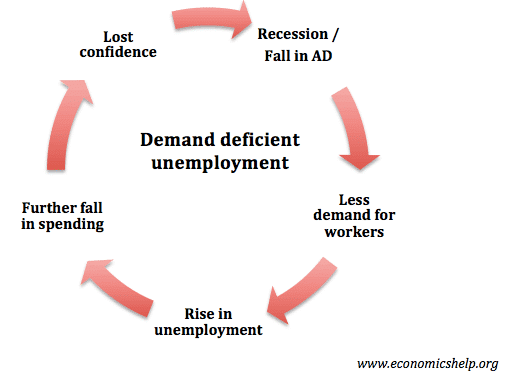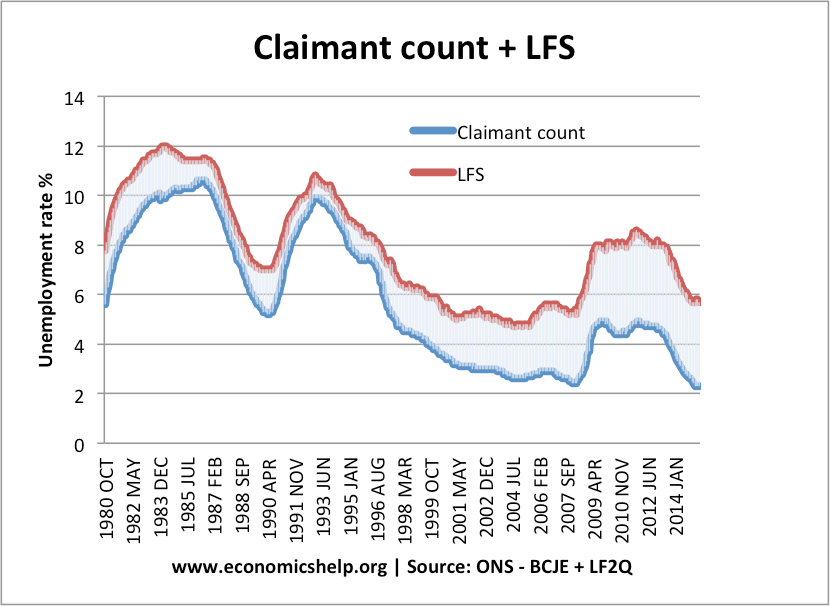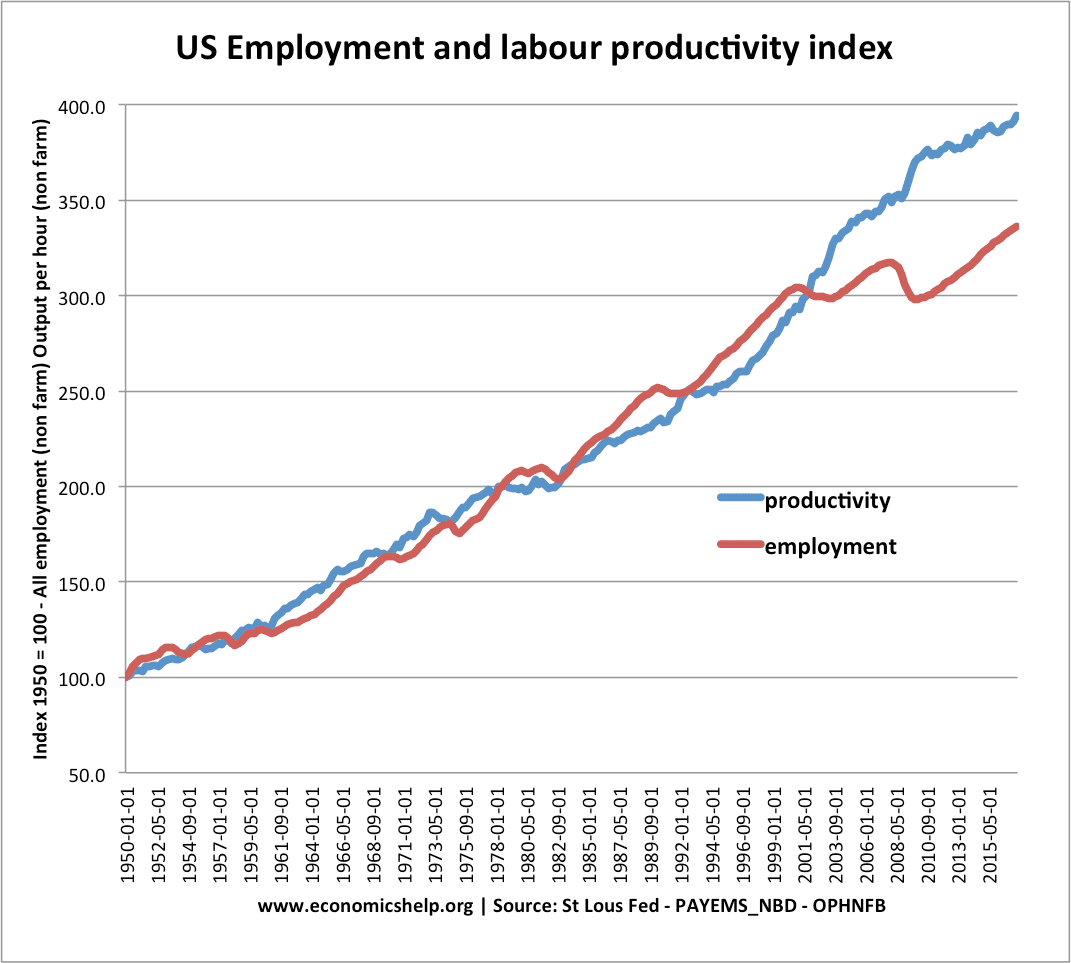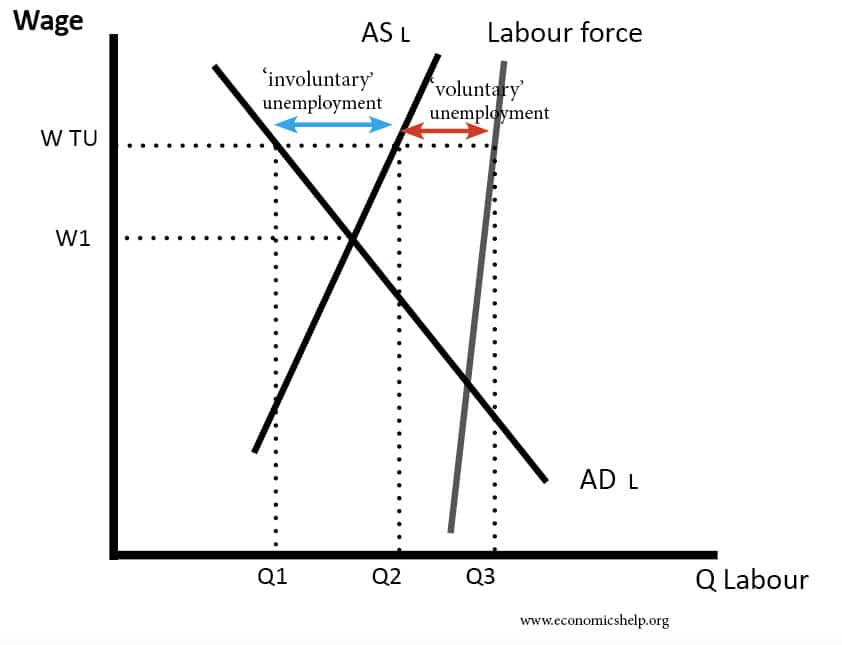What might cause the natural rate of unemployment to change over time?
The Natural rate of unemployment is mainly composed of frictional and structural unemployment. Therefore, factors that affect these types of unemployment will alter the natural rate. It is argued the level of unemployed benefits can affect frictional unemployment. If the ratio of benefits to paid employment is high, then there is little incentive to take …

